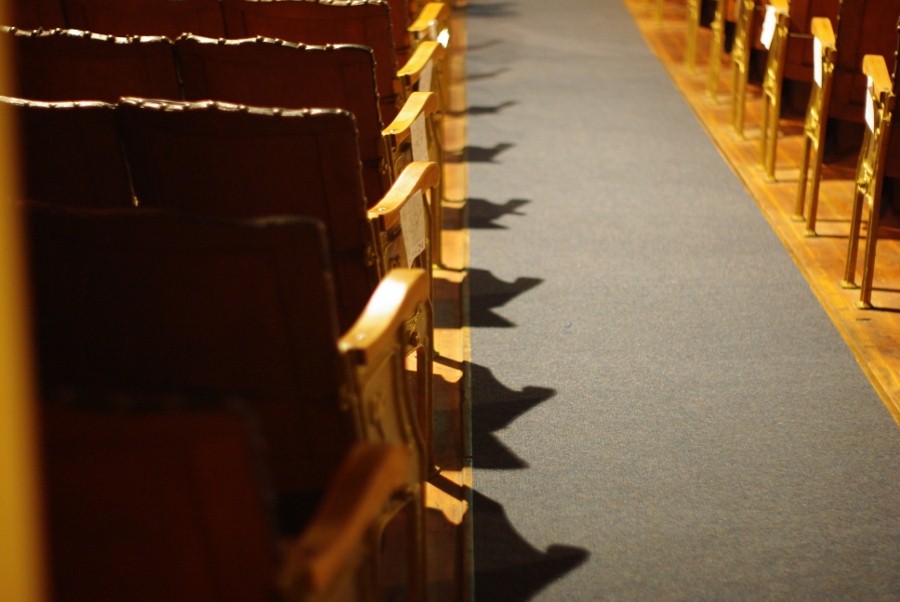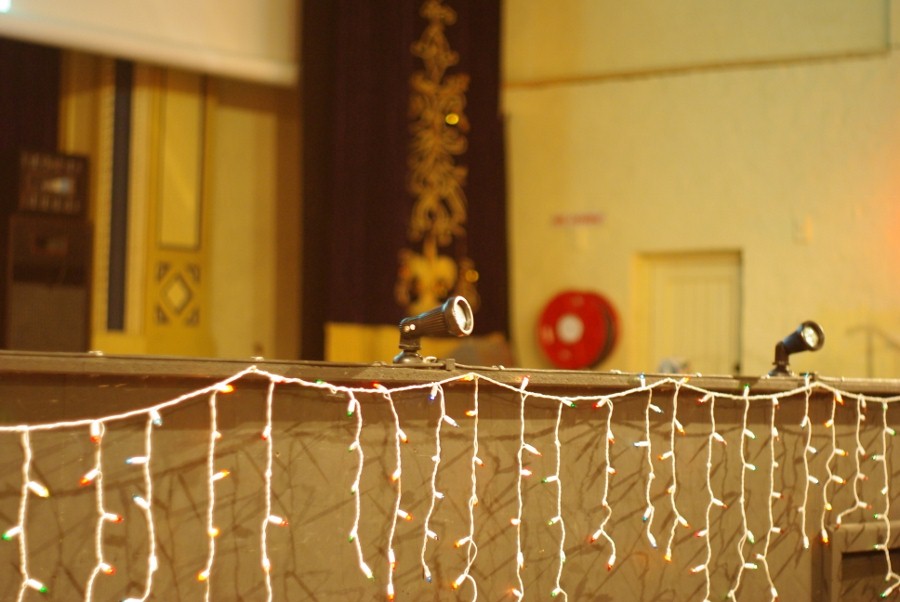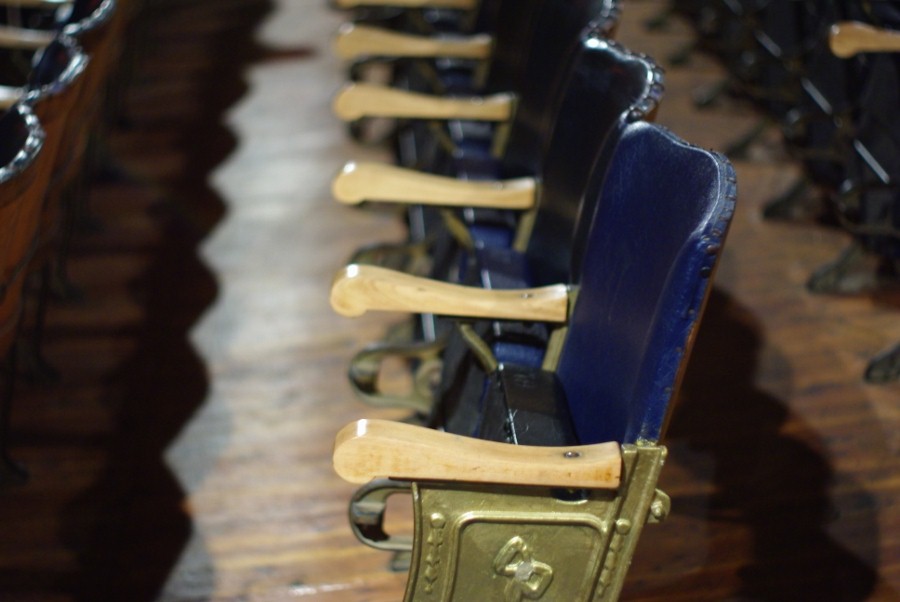 Posted: Thu Sep 23, 2010 11:50 am Post subject: Low light shooting in a theater setting Posted: Thu Sep 23, 2010 11:50 am Post subject: Low light shooting in a theater setting |
 |
|
mo wrote:
I just attended my sons school musical...so I thought I would test out my Auto Rikenon 1.4/55 and Pentax K200D and not use the in built flash...damn it is hard to get focus in that sort of lighting 
I have a few questions...Did I select the right lens for the light? I have limited lenses to select from.
I was disappointed by missed focus and blur....any tips on what to do next time.
Was I right in keeping the lens wide open ( F1.4) all the time or should I have set it differently?The lighting changed from half light to full light a lot.
Here is a few of the chairs inside..it is an old art deco building...I don't have the lenses to capture the great features of this building...anyway here they are no flash!
#1

#2

#3

#4

#5

_________________
Moira, Moderator 
Fuji XE-1,Pentax K-01,Panasonic G1,Panasonic G5,Pentax MX
Ricoh Singlex TLS,KR-5,KR-5Super,XR-10
Lenses
Auto Rikenon's 55/1.4, 1.8, 2.8... 50/1.7 Takumar 2/58 Preset Takumar 2.8/105 Auto Takumar 2.2/55, 3.5/35 Super Takumar 1.8/55...Macro Takumar F4/50... CZJ Biotar ALU M42 2/58 CZJ Tessar ALU M42 2.8/50
CZJ DDR Flektogon Zebra M42 2.8/35 CZJ Pancolar M42 2/50 CZJ Pancolar Exakta 2/50
Auto Mamiya/Sekor 1.8/55 ...Auto Mamiya/Sekor 2/50 Auto Mamiya/Sekor 2.8/50 Auto Mamiya/Sekor 200/3.5 Tamron SP500/8 Tamron SP350/5.6 Tamron SP90/2.5
Primoplan 1.9/58 Primagon 4.5/35 Telemegor 5.5/150 Angenieux 3.5/28 Angenieux 3,5/135 Y 2
Canon FL 58/1.2,Canon FL85/1.8,Canon FL 100/3.5,Canon SSC 2.8/100 ,Konica AR 100/2.8, Nikkor P 105/2.5
|
